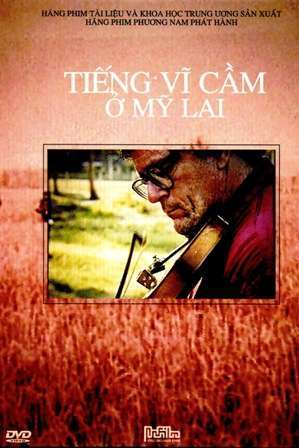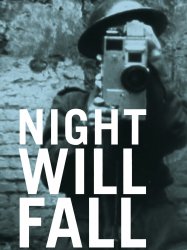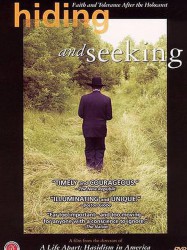The Sound of the Violin in My Lai est un film
The Sound of the Violin in My Lai (1998)

Si vous aimez ce film, faites-le savoir !
- Infos
- Casting
- Infos techniques
- Photos
- Vidéos
- Passages TV
- Citations
- Personnages
- Musique
- Récompenses
Durée 32minutes
Note27%










The Sound of the Violin in My Lai (Vietnamese: Tiếng vĩ cầm ở Mỹ Lai) is a short film that examines the history and legacy of the My Lai massacre, an incident of the Vietnam War in which hundreds of Vietnamese civilians were massacred by U.S. Army soldiers. The film investigates the effects of the massacre, with the story centering on the return of American soldiers Hugh Thompson and Larry Colburn to My Lai on the 30th anniversary of the event.
The film was commissioned by the Vietnamese government. It garnered director Tran Van Thuy the Best Documentary Prize at the Asia Pacific Film Festival in year 2000.
The violin referenced in the title is that of American Vietnam veteran and peace activist Roy Boehm.
^ Oliver, Kendrick. The My Lai Massacre in American History and Memory. 2006, page 277-8
Commentaires
Postez un commentaire :
Suggestions de films similaires à The Sound of the Violin in My Lai
Il y a 8617 films qui ont les mêmes thèmes (dont 319 films qui ont les mêmes 4 thèmes que The Sound of the Violin in My Lai), pour avoir au final 70 suggestions de films similaires.Si vous avez aimé The Sound of the Violin in My Lai, vous aimerez sûrement les films similaires suivants :

Inshallah, Kashmir (2012)
, 1h22Réalisé par Ashvin Kumar
Genres Documentaire
Thèmes Le terrorisme, Documentaire sur le droit, Documentaire sur la guerre, Documentaire historique, Documentaire sur la politique, Documentaire sur le terrorisme, Politique
Note68%





The film opens with ex-militants describing the torture they underwent when captured by the army. A Hindu describes his sentiment on being a part of the minority in the region at the height of militancy, when his grandfather was shot dead by militants. A politician and her husband describe the horror of being kidnapped and in captivity for over a month – and despite that, forming a human bond with the militants, and helping them escape when the army closed in on them. One understands from this section that militancy was not binary in nature. It was a dynamic and complex, resulting from various socio-political, economic and religious issues.

Nos lieux interdits (2009)
, 1h45Réalisé par Leïla Kilani
Origine France
Genres Documentaire
Thèmes Afrique post-coloniale, La famille, Documentaire sur le droit, Documentaire sur la guerre, Documentaire historique, Documentaire sur une personnalité, Documentaire sur la politique, Politique
Note65%





En 2004, cinq ans après son intronisation, le roi du Maroc Mohammed VI met en place une Commission pour l’équité et la réconciliation pour enquêter sur la violence d’État durant les années de plomb, sous le règne de son père Hassan II. Le film accompagne durant trois ans quatre familles dans leur quête de la vérité : militant, jeune rebelle militaire ou simple citoyenne, eux-mêmes ou les membres de leur famille ont été emprisonnés dans différents lieux disséminés sur l’ensemble du territoire marocain. Chaque personnage tente de « savoir », de donner du « sens », de faire le deuil. Mais quarante ans plus tard, le secret d’État finit par dévoiler l’existence d’un autre secret, plus intime, le secret de famille. Chacun éprouve alors la nécessité de reconstruire cette histoire et de retrouver les Pères, doublement enlevés par la disparition et par le secret.

Goodbye Holland (2004)
, 1h30Réalisé par Willy Lindwer
Genres Documentaire
Thèmes Le racisme, Religion, Documentaire sur la discrimination, Documentaire sur le droit, Documentaire sur la guerre, Documentaire historique, Documentaire sur une personnalité, Documentaire sur la religion, Politique, Religion juive, Documentaire sur la Seconde Guerre mondiale
 , 1h15
, 1h15Genres Documentaire
Thèmes Le racisme, Religion, Documentaire sur la discrimination, Documentaire sur le droit, Documentaire sur la guerre, Documentaire historique, Documentaire sur la religion, Politique, Religion juive, Documentaire sur la Seconde Guerre mondiale
Acteurs Alfred Hitchcock, Jasper Britton, Billy Wilder, Helena Bonham Carter
Note79%





En 1945, le cinéaste Alfred Hitchcock est engagé pour superviser le montage d'un documentaire produit par l'armée britannique sur la libération des camps de concentration nazis. Un film qui était destiné à montrer au peuple allemand les atrocités qui avaient été commises en son nom par les nazis. Une fois le film terminé, celui-ci fut cependant enterré pour des raisons politiques et jamais diffusé. Il fut alors simplement déposé à l'Imperial War Museum, à Londres, où dans les années 1980, les pellicules y ont été redécouvertes par un chercheur américain. Le film a fait l'objet d'une restauration complète respectant les choix du cinéaste. "Night Will Fall" retrace l’histoire de ce film pas fini, qui était connue longtemps sous le nom "The missing Hitchcock".

Anne Frank Remembered (1995)
, 1h57Genres Drame, Documentaire
Thèmes L'enfance, Le racisme, Religion, Documentaire sur la discrimination, Documentaire sur le droit, Documentaire sur la guerre, Documentaire historique, Documentaire sur une personnalité, Documentaire sur la religion, Politique, Religion juive, Documentaire sur la Seconde Guerre mondiale
Acteurs Kenneth Branagh, Glenn Close, Joely Richardson
Note80%






Hiding and Seeking (2004)
Genres Documentaire
Thèmes Le racisme, Religion, Documentaire sur la discrimination, Documentaire sur le droit, Documentaire sur la guerre, Documentaire historique, Documentaire sur une personnalité, Documentaire sur la religion, Politique, Religion juive, Documentaire sur la Seconde Guerre mondiale
Note77%






Death Mills (1945)
, 22minutesRéalisé par Billy Wilder
Origine Etats-Unis
Genres Guerre, Documentaire
Thèmes Le racisme, Religion, Documentaire sur la discrimination, Documentaire sur le droit, Documentaire sur la guerre, Documentaire historique, Documentaire sur une personnalité, Documentaire sur la religion, Politique, Religion juive, Documentaire sur la Seconde Guerre mondiale
Note74%





Le film fut à l’origine tourné avec une bande son en allemand pour être projeté dans l’Allemagne et l’Autriche occupées. Il s’agit du premier documentaire montrant ce que les Alliés découvrirent lorsqu’ils libérèrent les camps d’extermination nazi : les survivants, les conditions de vie, et la preuve d’un génocide. Le film fait état des aspects économiques de l’opération des camps. Des membres du personnel de ceux-ci, faits prisonniers, y sont interrogés. Et l’on y voit la visite forcée des habitants de villes voisines qui, de même que leurs compatriotes, sont accusés de complicité dans les crimes nazi – c’est l’une des rares condamnations de cette sorte enregistrées dans les archives alliées de la Seconde Guerre mondiale. Au même moment Samuel Fuller tournait son premier film amateur au camp de Falkenau, mais ces images ne seront visibles qu'en 1988, incluses dans Falkenau, vision de l’impossible, documentaire d’Emil Weiss.
 , 1h32
, 1h32Origine Etats-Unis
Genres Documentaire, Historique
Thèmes Film traitant du cinéma, Le racisme, Religion, Documentaire sur le monde des affaires, Documentaire sur le cinéma, Documentaire sur la discrimination, Documentaire sur le droit, Documentaire sur la guerre, Documentaire historique, Documentaire sur une personnalité, Documentaire sur la religion, Politique, Religion juive, Documentaire sur la Seconde Guerre mondiale, Documentaire sur les films
Acteurs Gene Hackman, Robert Clary, Dan Curtis, Ralph Edwards, Ralph Fiennes, Ben Kingsley
Note74%





 , 54minutes
, 54minutesRéalisé par Anne Aghion
Thèmes Afrique post-coloniale, Le racisme, Documentaire sur la discrimination, Documentaire sur le droit, Documentaire sur la guerre, Documentaire historique, Documentaire sur une personnalité, Documentaire sur la politique, Politique
Note70%





Set in Rwanda, Anne Aghion, the director, interviews a genocide offender who has been released back into his community, and the victims of the genocide. The film follows how at first, the coexistence between the people who instigated the genocide and the victimized people is unbearable. Many of the victims feel rage toward their former oppressors. But gradually, the victims and oppressors start talking to the camera, and then to each other as they start the difficult task of living with each other. The documentary portrays how the people's spirits cannot be crushed by the Rwandan Genocide, the 1994 mass killing of hundreds of thousands of Rwanda's minority Tutsis and the moderates of its Hutu majority by the Interahamwe and the Impuzamugambi.

Siam Burma Death Railway (2014)
Origine Singapour
Genres Documentaire
Thèmes Transport, Le train, Documentaire sur le droit, Documentaire sur la guerre, Documentaire historique, Documentaire sur les technologies, Politique, Documentaire sur la Seconde Guerre mondiale
This documentary film opens with WWII war between the Allied forces, comprising America – Australia – Netherlands, under the leadership of Great Britain, fought against the Axis countries of Germany – Japan and Italy. On such super-power Japan, which had been waiting for a long time, expecting an opportunity to materialize its plan of Greater Asia. It's Japan’s dream plan to extend its reign via Singapore, Malaya, Thailand and Burma up to India. On 8th Dec 1941, Singapore fell at the hands of Japan, which had begun the war in the name of Asian independence. Immediately, Japan decided to carry out its plan of Greater Asia. As a first step, Japan planned to lay the Siam – Burma railway line connecting Siam(i.e., Thailand) and Myanmar.
 Connexion
Connexion